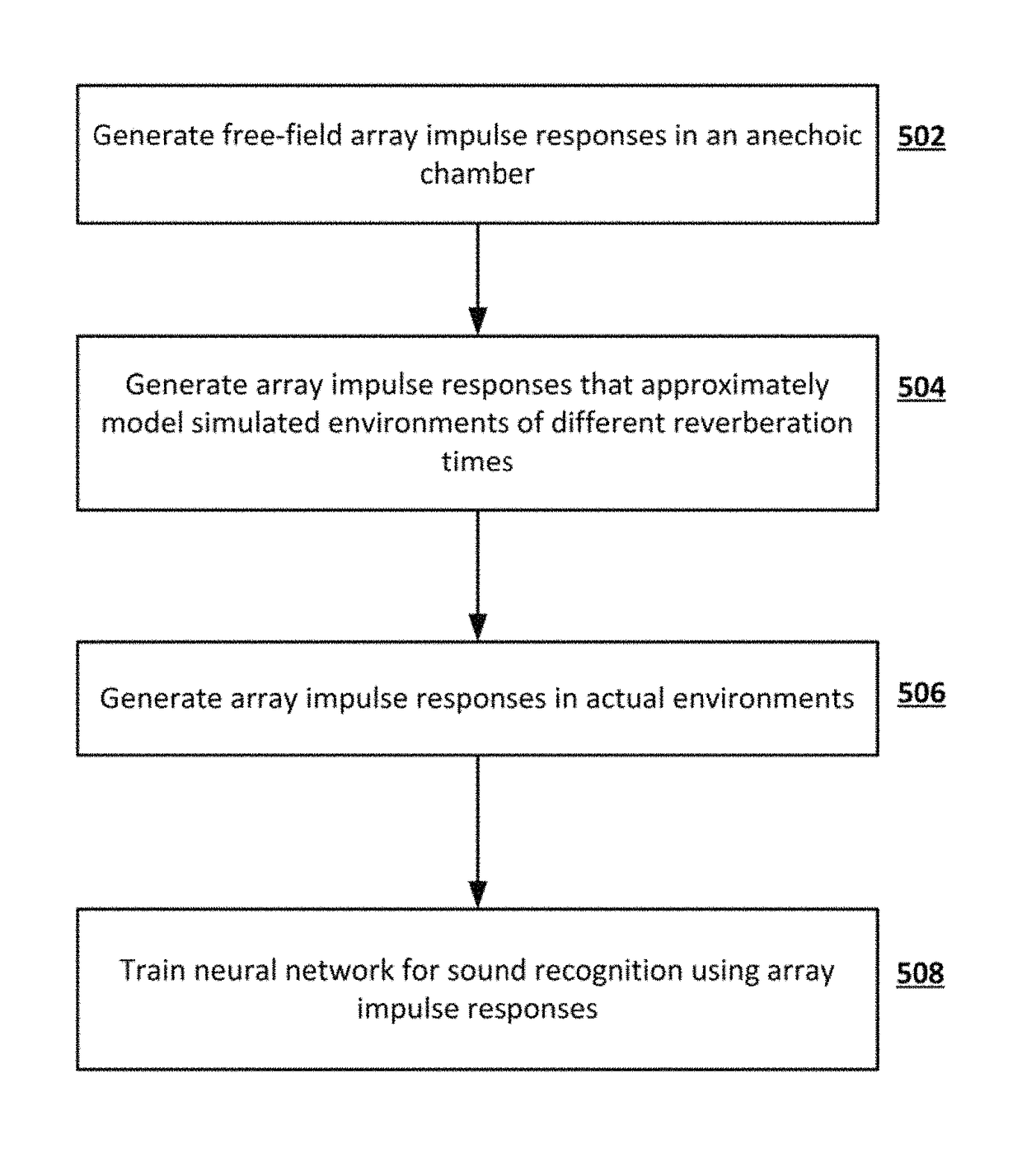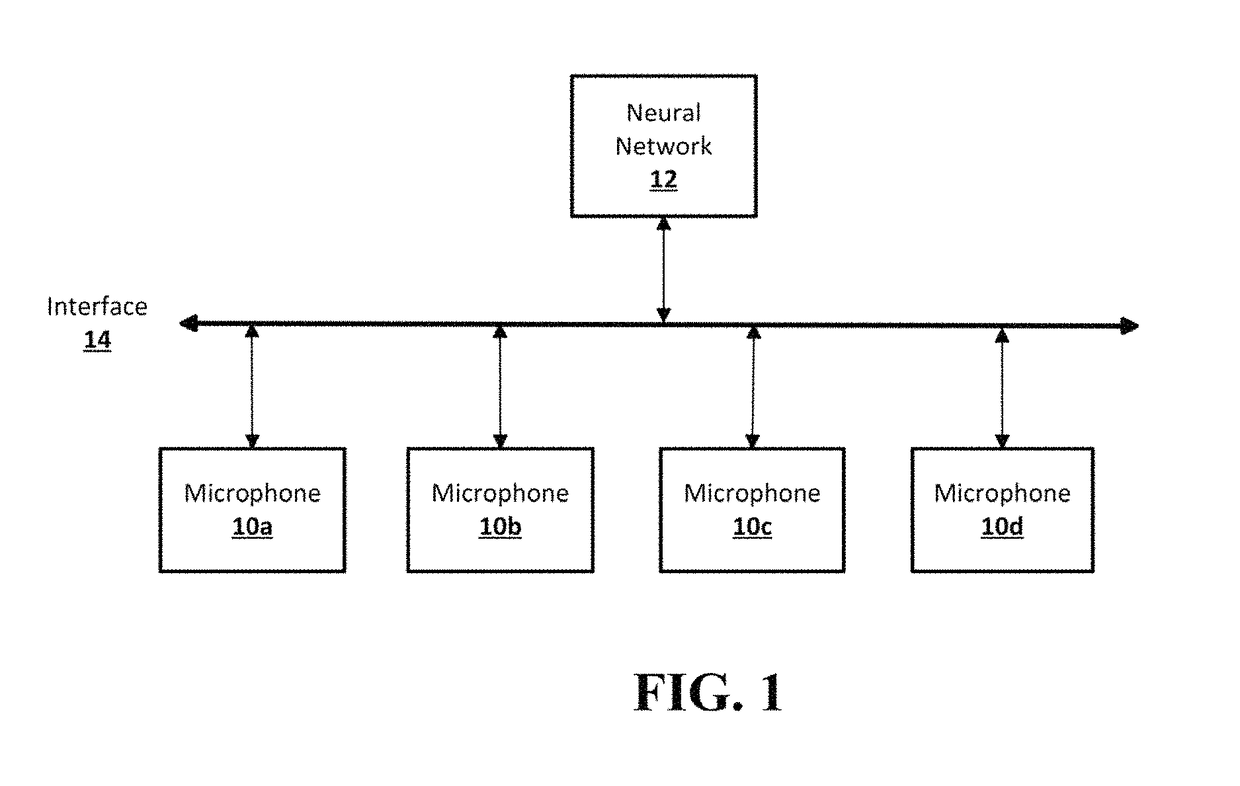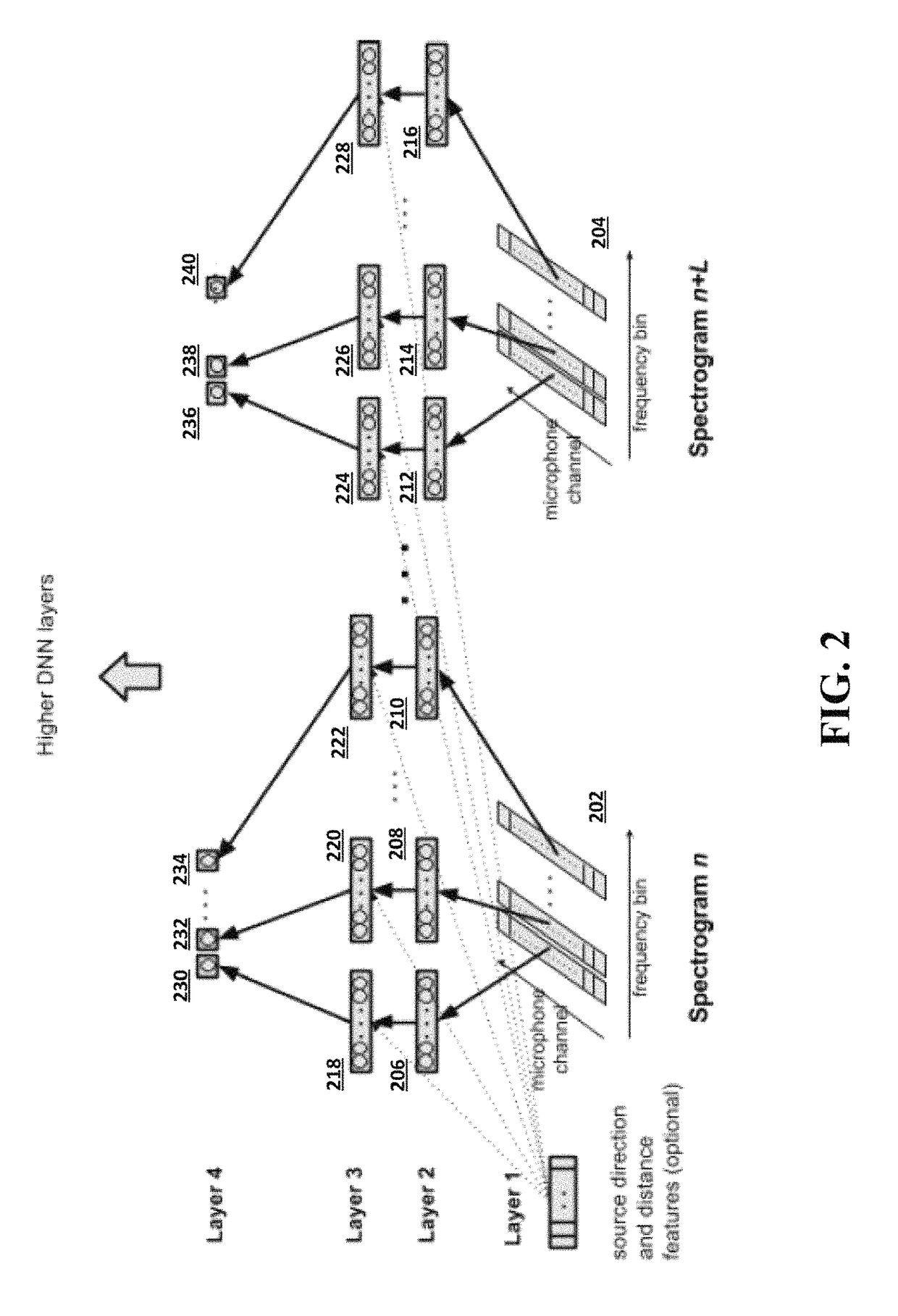Multi-microphone neural network for sound recognition
a multi-microphone and neural network technology, applied in the field of multi-microphone neural network for sound recognition, can solve the problems of limiting the number of design options of multi-microphone devices, limiting the number of options for users, and not optimally enhancing audio signals by beamformers
- Summary
- Abstract
- Description
- Claims
- Application Information
AI Technical Summary
Benefits of technology
Problems solved by technology
Method used
Image
Examples
Embodiment Construction
[0017]According to embodiments of this disclosure, methods and apparatus are provided for constructing neural networks, such as deep neural networks, that receive sound waveforms from arbitrary numbers of microphones arranged in arbitrary geometries. In the foregoing description, multiple microphones may be collectively referred to as an “array” of microphones, but the disclosed subject matter may not be limited to physical placements of microphones along a line or multiple lines. An “array” of microphones may include microphones placed in various physical locations in a given environment, for example, an indoor environment such as a smart-home environment, or in another type of environment.
[0018]In an embodiment, a neural network may be constructed to include lower layers having sufficient degrees of freedom to enhance or to suppress, spatially, spectrally, or temporally, multi-channel sound signals received from multiple microphones so as to improve recognition accuracy. In an emb...
PUM
 Login to View More
Login to View More Abstract
Description
Claims
Application Information
 Login to View More
Login to View More - R&D
- Intellectual Property
- Life Sciences
- Materials
- Tech Scout
- Unparalleled Data Quality
- Higher Quality Content
- 60% Fewer Hallucinations
Browse by: Latest US Patents, China's latest patents, Technical Efficacy Thesaurus, Application Domain, Technology Topic, Popular Technical Reports.
© 2025 PatSnap. All rights reserved.Legal|Privacy policy|Modern Slavery Act Transparency Statement|Sitemap|About US| Contact US: help@patsnap.com



